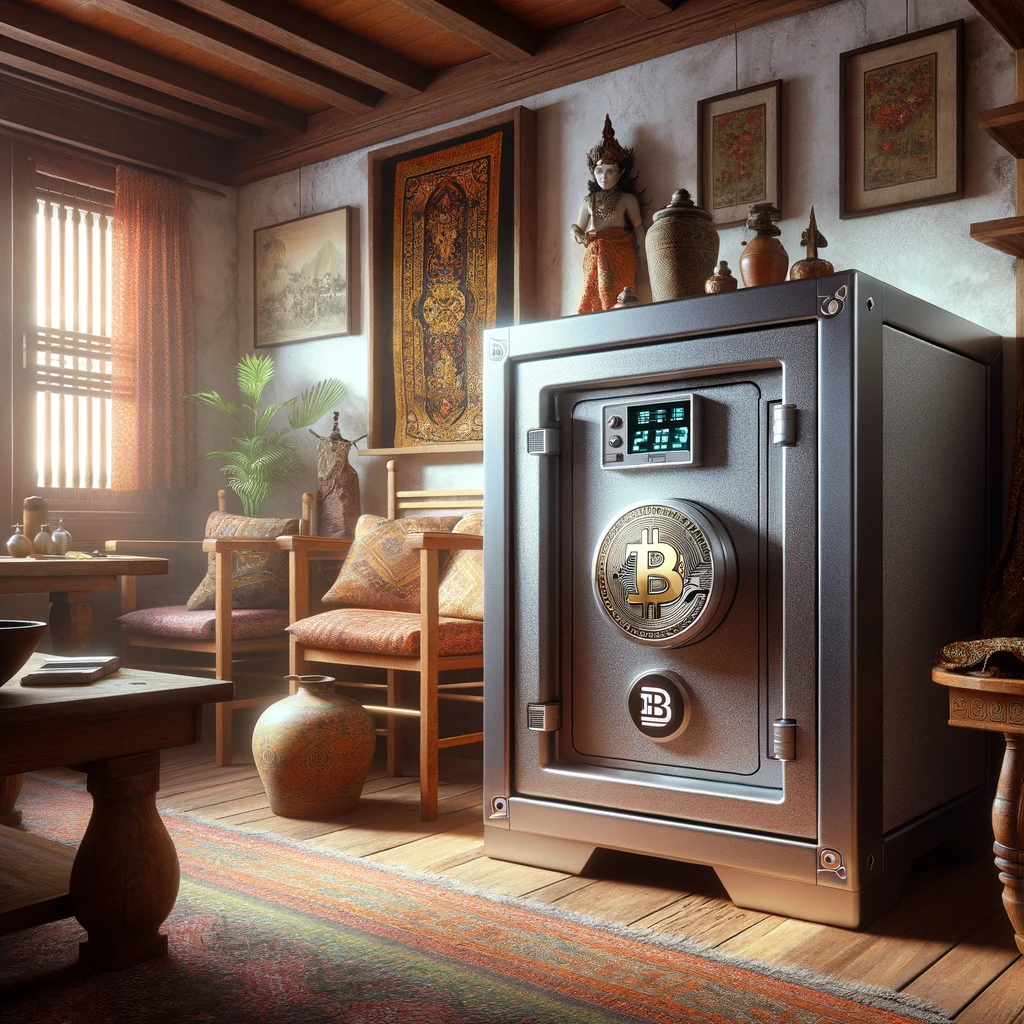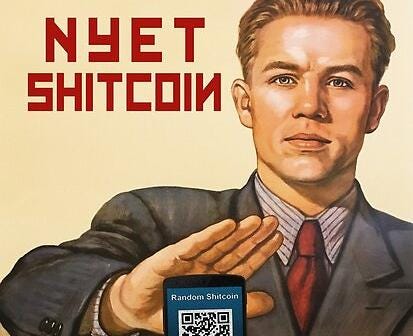List of Contents
Lesson 1: Bitcoin’s Introduction to the World
Lesson 2: Who Looks After Bitcoin?
Lesson 3: What Exactly Is Money?
Lesson 4: The Special Number: 21 Million
Lesson 5: Proof of Work – How Bitcoin Keeps It Fair
Lesson 6: The Halving – How Bitcoin Keeps Itself Rare
Lesson 7: Bitcoin Full Nodes – “Don’t trust – Verify”
Lesson 8: Is Bitcoin Safe from Hacking?
Lesson 9: The Great Fork Wars of 2017
Lesson 10: How Can We Scale Bitcoin?
Lesson 11: Does Bitcoin Have “Intrinsic Value”?
Lesson 12: Bitcoin is Beyond Politics
Lesson 13: Saving in Bitcoin Lesson
Lesson 14: Keeping Your Bitcoin Safe — The Basics of Self-Custody
Lesson 15: Bitcoin and Clean Energy
Lesson 16: Bitcoin Is Freedom
Lesson 17: Can Bitcoin Be Banned?
Lesson 18: Advancing Humanity with Bitcoin
Lesson 19: Why Bitcoin, Not Crypto?
Lesson 20: DeFi on Bitcoin
Lesson 21: Hyperbitcoinization — Life Under The Bitcoin Standard
Lesson 1: Bitcoin’s Introduction to the World
A Brief History
On a seemingly ordinary day, January 3, 2009, a groundbreaking event occurred that would later be recognized as the dawn of a new era in finance. A person or group under the pseudonym Satoshi Nakamoto launched the Bitcoin network by mining its very first block, known as the genesis block. This marked the birth of Bitcoin, the first cryptocurrency, a concept that was as revolutionary as it was enigmatic.
Bitcoin, denoted with a capital “B,” is a groundbreaking technology offering a global, borderless, and decentralized system for peer-to-peer currency exchange, represented as bitcoin with a lowercase “b.” With a predetermined maximum supply of 21 million and a decreasing issuance rate, Bitcoin introduced a new kind of money. Unlike the traditional financial system characterized by opacity, inaccessibility, and inflation, Bitcoin emerged as a transparent, permissionless network accessible to anyone worldwide, promising an end to the exclusion of nearly two billion people from the global financial system.
What Does Bitcoin Solve?
– Centralization: Bitcoin challenges the conventional financial system by eliminating the need for centralized intermediaries, such as banks and credit card companies, to validate transactions. It operates on a peer-to-peer basis, removing the reliance on a central authority and fostering a trustless environment.
– Verifiability: In contrast to fiat currencies, where counterfeit bills pose a real challenge, Bitcoin ensures the authenticity of each unit through cryptographic security. The Bitcoin network, maintained by a public blockchain accessible to anyone, allows for the verification of bitcoin as genuine, countering the issue of counterfeit currency.
– Inflation: One of the most defining features of Bitcoin is its capped supply of 21 million bitcoins. This limitation prevents the dilution of value through the creation of additional currency, a common practice with fiat currencies that leads to inflation and the erosion of purchasing power over time.
Understanding Bitcoin
For those new to the concepts of “blockchain” and “decentralization,” Bitcoin might seem like a complex mystery. However, the essence of Bitcoin is about eliminating the need for trust in financial transactions. The Bitcoin network acts as a digital ledger, a chain of blocks that records transaction data publicly and indelibly. Verified by a global network of Bitcoin full nodes, each holding a complete copy of the blockchain, transactions on the Bitcoin network are secure without the need for third parties.
Bitcoin as Sound Money
The existing financial system, plagued by hyperinflation, economic disparity, and reliance on the policies of powerful nation-states, is fundamentally flawed. Bitcoin offers a radical alternative: a currency free from central authority control, immune to the whims of government-induced inflation, and promising a return to sound money principles.
Bitcoin’s creation wasn’t just an attempt at technological innovation; it was a direct response to the failings of the traditional financial system. It offers not just a new form of money but a new vision of financial freedom and equality, paving the way for a future where financial autonomy is accessible to all.

Lesson 2: Who Looks After Bitcoin?
Understanding Who Controls Bitcoin
When people first learn about Bitcoin, they often ask, “Who’s in charge?” It’s a fair question because, in the world of money, we’re used to having banks and governments calling the shots. But here’s the cool part about Bitcoin: no single person, company, or country is in control. It’s all about being decentralized, which means it’s run by lots of people all over the world instead of just one big boss.
Why Being Decentralized Matters
Decentralization is a big word, but it’s at the heart of what makes Bitcoin special. In most of the world, money is controlled by big banks and governments. That kind of money is called “fiat,” which is a fancy way of saying it’s official because the government says so.
But this setup has some downsides. For example, banks can charge you fees for keeping your money or not having enough money in your account. And if you’re one of the billions of people without a bank account, you’re pretty much left out of the system.
Bitcoin’s Big Idea
Bitcoin says, “Let’s do things differently.” Instead of one group in charge, everyone who uses Bitcoin helps run it. This way, no matter where you are or who you are, your money is safe and you can be part of the Bitcoin world. And because Bitcoin isn’t run by any one country or company, it’s really hard for it to be shut down or controlled by the bad guys.
Privacy for Everyone
One of the neat things about Bitcoin is that you don’t have to give away your personal info to use it. Unlike opening a bank account, where you need to prove who you are, Bitcoin doesn’t ask for that. This means you can have more privacy, which is a big deal for a lot of people.
Sure, if you buy Bitcoin through an app or a website, you might need to share some info, but once you move your Bitcoin into your own wallet (kind of like a digital piggy bank that only you control), nobody needs to know it’s yours.
Being Your Own Bank
The coolest part about Bitcoin is that it lets you be in charge of your own money. You don’t need to trust a bank to take care of it for you. With Bitcoin, you can send, receive, and save your money without anyone else’s permission or control.
As we keep learning about Bitcoin, remember that its power comes from all of us working together, not from some big boss in the sky. Bitcoin is changing the way we think about money by making it more open and fair for everyone. Stick around to learn more about how Bitcoin works and what it can do.

Lesson 3: What Exactly Is Money?
What is Money?
So, what’s money really? At its core, money is anything that people agree to use to buy stuff, pay off debts, or cover taxes. It’s not just about the paper bills and coins we use every day. Money can be pretty much anything, as long as it does three big jobs: it needs to measure value (like how we price things), make trading easy, and keep its worth over time.
Money Through Time
Long ago, our ancestors traded all sorts of things, thinking of them as money. This included shells, animals, metals like silver and gold, and even big stones! For instance, people used cowrie shells for trading across Africa and Asia for centuries. These shells were perfect for money back then because they were rare, easy to recognize, hard to fake, and you couldn’t just find them anywhere.
In some places today, where regular money doesn’t mean much, folks find other items to use as money, like cigarettes or instant noodles in prisons.
A Lesson from Giant Stones
One of the coolest old money systems was on Yap Island, where they used huge stones called Rai stones as currency. These stones were super big and heavy, and because they were so hard to get, they were really valuable. People didn’t move these stones around; they just remembered who owned which stone.
But then, an outsider saw a chance to make some quick money. He brought in big stones using modern tools, which was much easier. At first, some people were okay with this new way, but it eventually made the Rai stones lose their value because they weren’t rare or special anymore.
When Money Goes Wrong
Today, we see some countries struggling with their money becoming worthless super fast, like in Venezuela and Zimbabwe. This happens when governments print too much money, making it lose its value. It’s a big problem because it can make it really hard for people to buy the things they need.
Enter Bitcoin
Here’s where Bitcoin comes in. It’s a totally new kind of money that doesn’t let anyone just make more whenever they want. Bitcoin has a set amount that will ever exist, which means it can’t lose value the same way regular money can when too much of it is made.
Bitcoin offers a fresh start, a way to fix some of the big problems with the money we’ve used before. It’s built to be fair, open, and hard to mess up by making too much of it.

Lesson 4: The Special Number: 21 Million
Why 21 Million Matters
Have you ever wondered why Bitcoin is like a limited edition item? It’s all because of a magic number: 21 million. That’s the total number of Bitcoins that will ever exist. This limit is what makes Bitcoin different from regular money that governments can just keep making more of.
Playing the Money Game
Think of it like a board game, where everyone starts with the same chance to buy houses and make money. At first, you feel rich because you get money every time you pass the start, but then you notice something. The more the game goes on, the less your money buys you. That’s because, in the real world, when more money is made, the stuff you want to buy with that money gets more expensive. This is called inflation, and it’s like the game making it harder for you to win.
Bitcoin’s Big Idea
Bitcoin decided to change the rules of the game. It said, “Let’s only make 21 million coins and no more.” This way, no one can make the game unfair by making more money and making everything else more expensive. The idea is that if there’s only a limited amount of Bitcoin, it will be worth more as more people want to use it. Bitcoin is not a hedge against inflation, it is a solution to inflation
Everyone Wants a Piece
Now, think about this: there are way more than 21 million people in the world. This means not everyone can have a whole Bitcoin. But that’s okay because each Bitcoin can be broken down into smaller pieces, called satoshis. Just like how a dollar can be broken into cents.
How Prices Go Up and Down
The price of Bitcoin goes up and down (if you still measure everything from a fiat system) based on how many people want it and how many are available. This is called supply and demand. Since there will only ever be 21 million Bitcoins, the supply part doesn’t change. So, when more people want Bitcoin, the fiat price goes up, but what actually happens is that the prices of everything are exponentially going down if measured in Bitcoin.
What This Means for You
Even though we might not use Bitcoin to buy things in the store today, holding onto it could be a smart move. As the value of regular money goes down because more and more of it is made, the value of Bitcoin might go up since there’s a cap on how much exists.
In the next lessons, we’ll dive deeper into how new Bitcoins are made and why even though we can’t make more than 21 million, the system still works really well. Stay tuned to find out how Bitcoin could change the way we think about money forever.

Lesson 5: Proof of Work – How Bitcoin Keeps It Fair
What is Proof of Work (PoW)?
Have you ever heard people talking about PoW or Proof of Work when they chat about Bitcoin? Imagine it as a superhero power that lets Bitcoin run without anyone in charge, like a bank or government. It’s a smart computer trick that helps make sure Bitcoin is safe and works right for everyone.
How Proof of Work Helps Everyone
In the Bitcoin world, there are people called miners who have a big job. They use their computers to check and record everyone’s Bitcoin transactions in something called the timechain, which is like a giant, secure ledger that everyone can see. To do this, miners have to solve a super tricky math puzzle, and the first one to solve it gets some new Bitcoin as a reward. This puzzle-solving process is called Proof of Work.
A Simple Way to Understand Mining
Think of it like a treasure hunt. Let’s say you’re looking for diamonds because they’re rare and valuable, just like Bitcoin. You search and dig, hoping to find a big enough diamond to win a prize. But finding diamonds is mostly about luck and how much effort you put in.
Sometimes, miners work together in groups, called mining pools, to find diamonds. If anyone in the pool finds a big diamond, they all share the prize based on how much each person helped. It’s the same with Bitcoin mining. They join forces to solve puzzles, and when they win, they share the new Bitcoin.
Making Things Fair with Difficulty Adjustments
As more people join the hunt for diamonds, or in this case, Bitcoin, it might start getting too easy to find them. So, every couple of weeks, Bitcoin makes the puzzle harder or easier based on how many people are trying to solve it. This keeps things fair, so new Bitcoin comes out at a steady pace, not too fast or slow.
Why This Matters
This whole setup with Proof of Work is what keeps Bitcoin running smoothly. It stops any single person or group from taking over and makes sure new Bitcoin is made fairly. Plus, it keeps the whole Bitcoin system secure because solving those puzzles to add transactions to the blockchain takes a lot of work. This means it’s really hard for anyone to mess with Bitcoin.

Lesson 6: The Halving – How Bitcoin Keeps Itself Rare
Understanding The Halving
The Halving is a Bitcoin event that happens every four years where the reward for mining new Bitcoins is cut in half. It’s like a game where the points you earn for completing a task get reduced over time.
Why Halve the Rewards?
Bitcoin was designed with a limit of 21 million coins to keep it rare, similar to precious metals like gold. The halving helps control how quickly these Bitcoins are created and released, ensuring they don’t all come out at once. This scarcity can make Bitcoin more valuable over time.
Mining Rewards and Halvings
At the start, miners got 50 Bitcoins for solving puzzles. After the first halving, it dropped to 25, then 12.5, and now it’s at 6.25, soon to be 3.125. This pattern will continue until around the year 2140 when all Bitcoins are mined.
Impact on Miners
Even with smaller rewards, miners still benefit. They earn transaction fees, which will become their main reward after all Bitcoins are mined. Plus, if Bitcoin’s value increases, the smaller rewards still hold significant worth.
In Summary
The Halving is a key part of Bitcoin’s design to ensure its rarity and value. It’s a fascinating event that highlights Bitcoin’s unique approach to creating a digital currency that mimics the scarcity of natural resources.
![]()
Lesson 7: Bitcoin Full Nodes – “Don’t trust – Verify”
Welcome to another chapter in our Bitcoin adventure! Let’s dive into Bitcoin Full Nodes. These are the unsung heroes ensuring that Bitcoin remains secure, decentralized, and reliable.
What’s a Bitcoin Full Node?
Imagine a worldwide network of guardians, each holding a complete copy of all Bitcoin transactions ever made. These guardians are called Full Nodes. They follow rules set by the Bitcoin protocol to check every transaction and block, making sure everything’s correct.
Why Are Full Nodes Important?
Full Nodes are like the immune system of Bitcoin. They protect the network from attacks and ensure that no one can cheat by spending Bitcoins they don’t own or creating Bitcoins out of thin air. They do this by verifying every transaction against Bitcoin’s rules.
“Don’t trust, verify”
Bitcoin’s motto is “Don’t trust, verify”. Unlike traditional banking, where you have to trust the bank, Bitcoin allows you to verify everything yourself. If you run a Full Node, you don’t have to trust anyone else because you can check the entire Bitcoin ledger on your own computer.
How Do Full Nodes Work?
When someone sends Bitcoin, that transaction is broadcast to the network. Full Nodes pick up this transaction and check it against Bitcoin’s rules. If it’s valid, they pass it on until the entire network knows about it. This process is how Bitcoin keeps its ledger accurate and secure without a central authority.
Can Anyone Run a Full Node?
Yes, anyone with a computer and an internet connection can run a Full Node. We recommend Umbrel. It’s a way to participate in the Bitcoin network actively and help keep it secure. Plus, running a Full Node gives you the power to verify transactions yourself, embracing the true ethos of Bitcoin.
In Summary
Bitcoin Full Nodes are the backbone of the Bitcoin network. They keep the system honest and secure, allowing us to trust the network without trusting any single entity. By running a Full Node, you become part of Bitcoin’s decentralized defense, ensuring its integrity and independence.

Lesson 8: Is Bitcoin Safe from Hacking?
Bitcoin’s Strong Walls
Think of Bitcoin like a super secure, digital safe that keeps track of everyone’s Bitcoin. This safe has a special book that records every Bitcoin move. Once written in the book, nobody can change it. It’s like magic ink!
Many Guards, One Safe
Bitcoin is kept safe by lots of computers all over the world. To mess with Bitcoin, a bad guy would need to trick more than half of these computers at the same time. That’s super hard and would need a crazy amount of computer power and electricity.
Where It Gets Tricky
Even though Bitcoin’s safe is super strong, the places where people exchange Bitcoin or keep it (like apps or websites) can be less secure. When you hear about Bitcoin “hacking,” it’s usually these places that got tricked, not the Bitcoin itself.
Keeping Your Bitcoin Safe
Here’s what you can do to protect your Bitcoin:
– Pick a good wallet: Use trusted apps to keep your Bitcoin. We recommend Wallet of Satoshi or Fedi
– Secret keys are secret: Never tell anyone your secret Bitcoin keys.
– Use extra security: Turn on extra checks like 2FA to make your accounts safer.
– Think about offline cold storage: Keeping your Bitcoin on a hardware wallet can help keep it safe from online thieves.
So, Can Bitcoin Be Hacked?
While the big Bitcoin system is very tough to hack, you still need to be careful with how you handle your Bitcoin. Using good security tips can help keep your Bitcoin safe.

Lesson 9: The Great Fork Wars of 2017
Let’s dive into a big moment in Bitcoin history, something called the Great Fork Wars of 2017. It sounds like a sci-fi movie, but it’s really about people disagreeing on Bitcoin’s future.
What’s a Fork?
Imagine Bitcoin as a road. A “fork” is where the road splits into two different directions. This happens when people can’t agree on which way Bitcoin should go. In 2017, this happened big time.
The Big Disagreement
The disagreement was about how to make Bitcoin transactions faster and cheaper. Some people wanted to change the way Bitcoin works to speed things up. Others wanted to keep things the same to avoid new risks.
The Split
Because they couldn’t agree, Bitcoin split into two: the original Bitcoin (BTC) and a new version called Bitcoin Cash (BCH). It’s like if a group of friends can’t decide on a game to play, so one part of the group goes to play a different game.
Why It Matters
The split was a big deal because it showed that:
– Bitcoin can adapt: Bitcoin can change based on what its users want.
– Choices matter: People have different ideas on what’s best for Bitcoin, and sometimes that leads to big changes.
– Ownership: If you owned Bitcoin before the split, you also got the same amount in Bitcoin Cash. It’s like getting a bonus because of the disagreement.
After the Wars
Since then, there have been other forks, but none as big as the Bitcoin vs. Bitcoin Cash split. Both versions of Bitcoin are still around, and people can choose which one they like better.
What We Learned
The Great Fork Wars taught us that in the world of Bitcoin, big decisions can lead to big changes. It’s all part of how Bitcoin grows and changes over time.

Lesson 10: How Can We Scale Bitcoin?
Let’s talk about making Bitcoin handle more transactions. Imagine Bitcoin is a highway, but right now, it can only handle a few cars at a time. If too many cars show up, it gets jammed. We want to make the highway bigger or find new ways for cars to travel so everyone can move quickly.
The Problem
Bitcoin can be slow and expensive when lots of people try to use it at the same time. We want to make Bitcoin fast and cheap for everyone.
Solutions
Use Side Roads (Lightning Network or eCash): Another idea is to create a system where lots of small transactions happen off the main Bitcoin highway, on side roads, and then settle up on the main road later. One system like this is called the Lightning Network, another one is Fedimint. It’s like if you and your friends kept track of who bought snacks on a road trip and settled the bill at the end.
What’s Happening Now?
The Lightning Network and Fedimints are growing and helping Bitcoin transactions become faster and cheaper. One company building on top of Fedimint is a company called Fedi – you can download their app here. People are also exploring other ways to make the Bitcoin highway better for everyone. See what Fedi has done so far for global bitcoin adoption.
What We Learned
Scaling Bitcoin is about finding the best way to let more transactions happen quickly and cheaply. It’s a tough problem, but smart people are working on it, and we’re making progress every day.
Lesson 11: Does Bitcoin Have “Intrinsic Value”?
Today, let’s talk about something called “intrinsic value.” It’s a fancy way of asking, “Does Bitcoin have value on its own, like gold or silver?” Some folks argue that things like gold have value because you can make stuff with it, like jewelry or electronics. They say Bitcoin doesn’t have this kind of value because it’s digital and you can’t touch it or make anything physical from it. This simply shows that these folks have not done the work to learn about bitcoin the asset and Bitcoin the network.
What Makes Bitcoin Valuable
1. Limited Supply: There are only 21 million Bitcoins that can ever exist. This scarcity is similar to precious metals and can make Bitcoin valuable.
2. Useful: You can use Bitcoin to send money around the world quickly and without needing permission from banks. It’s like email for money.
3. Secure: Bitcoin’s technology makes it very secure. It’s hard to cheat or hack, which adds to its value.
4. Trust: People believe in Bitcoin and are willing to trade it for goods, services, and other currencies. This trust gives it value.
Thinking About Value
When we say something has “intrinsic value,” we’re really talking about how useful or important it is to us. For example, water is incredibly valuable because we need it to live, even though it’s usually not expensive.
Bitcoin’s Value
Bitcoin’s value comes from what it can do and how people use it. It’s valuable because it offers a different way to think about and use money. It’s like a special tool that does things other tools can’t.
Summary
Bitcoin might not have “intrinsic value” in the traditional sense, like gold or silver, but it has unique features that make it valuable to people who use it. It’s a new kind of money for the digital age.

Lesson 12: Bitcoin is Beyond Politics
Today, let’s explore how Bitcoin is different from regular money because it doesn’t play by the usual rules of politics or government decisions.
Money and Politics Usually Go Hand in Hand
Normally, the money we use every day is controlled by governments and central banks. They decide how much money to print and how to manage it. This can be good in some ways but can also lead to problems like inflation or financial control.
Bitcoin’s Different Path
Bitcoin doesn’t belong to any country or government. It works on a network that spans the whole world, and no single group or person controls it. This means:
1. No Printing More Money: Unlike regular money, where governments can decide to print more whenever they want, Bitcoin’s supply is fixed. There can only ever be 21 million Bitcoins. This helps prevent inflation.
2. No Central Control: Bitcoin runs on a system where everyone who participates has a say. It’s like a global team project where everyone follows the same rules, no matter where they are.
3. Freedom to Use: With Bitcoin, you can send and receive money anywhere in the world, anytime, without asking for permission. It’s like the internet for money.
Why This Matters
Because Bitcoin isn’t tied to any government or political system, it offers a kind of money that works the same for everyone, everywhere. It’s a tool for financial freedom that doesn’t care about borders or politics.
In Simple Terms
Imagine if the internet was just for one country or controlled by one company. It wouldn’t be the open, global tool we know today. Bitcoin applies this same idea to money, making it a global and open resource that anyone can use.
Summary
Bitcoin steps away from traditional money controlled by governments, offering a neutral form of money that doesn’t get mixed up in politics or national policies. It’s a big idea that can seem a bit strange at first, but it’s all about making money work fairly for everyone.

Lesson 13: Saving in Bitcoin
In today’s lesson, we’re going to talk about saving in Bitcoin. It’s a popular topic, but it’s important to approach it with a clear understanding.
What Does Saving in Bitcoin Mean?
Saving in Bitcoin means you’re buying Bitcoin now with the idea that it will protect your purchasing power from fiat debasement. People do this because they believe in Bitcoin (math) and its future as a form of money.
Why Save in Bitcoin?
1. Limited Supply: Remember, there are only ever going to be 21 million Bitcoins. This scarcity can make Bitcoin more valuable over time as more people want to use it.
2. Growing Acceptance: More businesses and even some countries are starting to accept Bitcoin. This wider acceptance could increase its value.
3. Control Over Your Money: Bitcoin lets you be your own bank. You control your investment without needing a middleman like a bank or government.
Things to Consider
– Volatility: Bitcoin’s price can go up and down a lot in a short time. This can be risky (from flawed fiat perspective) if you’re not prepared for the ups and downs.
– Long-term View: Many people see Bitcoin as a long-term investment. They’re not worried about short-term price changes but believe in the long-term potential.
– Research: Always do your own research before saving. Understand what you’re saving in and why.
How to Save
1. Buy Bitcoin: You can buy Bitcoin on various online exchanges. It’s like buying stocks, but you’re buying digital currency instead.
2. Secure Your Savings: Use a digital wallet to keep your Bitcoin safe. Think of it as a digital bank account for your Bitcoin.
Remember
Saving in Bitcoin can allow you to save your purchasing power whilst those saving in fiat instruments are losing purchasing power. Do not keep more money in your centralized bank account that you are willing to lose as seen in this example. Fiat is risky, saving in Bitcoin is not.
In Simple Terms
Think of investing in Bitcoin like planting a tree. It may take time to grow and face some storms, but the hope is that over time, it will become strong and valuable.

Lesson 14: Keeping Your Bitcoin Safe — The Basics of Self-Custody
When you save in Bitcoin, one of the most important things to think about is how to keep it safe. This lesson will help you understand the basics of self-custody and why it’s crucial for protecting your investment.
What is Self-Custody?
Self-custody means you’re in charge of your own Bitcoin. Unlike keeping money in a bank, where the bank has control over your funds, self-custody gives you full control. This is a big part of what makes Bitcoin special — you can be your own bank!
Why Self-Custody?
– Security: Keeping control of your Bitcoin means there’s no middleman that can lose or misuse it.
– Privacy: Self-custody allows you to keep your financial matters private, away from prying eyes.
– Control: You decide how to manage and spend your Bitcoin without asking for permission.
How to Self-Custody
1. Digital Wallets: These are apps or devices that allow you to store and manage your Bitcoin.
There are two main types:
– Hot Wallets: These are connected to the internet. They’re convenient for frequent use but can be vulnerable to online attacks.
– Hardware Wallets: These are not connected to the internet. They’re like digital safes for your Bitcoin, offering higher security for long-term storage.
2. Backup Your Wallet: Always make a backup of your wallet’s recovery phrase. This is a series of words that lets you access your Bitcoin if you lose your wallet. Keep it in a safe place where only you can find it.
3. Keep it Secret: Don’t share your wallet’s private keys or recovery phrase with anyone. If someone else gets them, they can take your Bitcoin.
Risks of Not Using Self-Custody
– Dependence on Others: If you keep your Bitcoin on an exchange or with a third party, you’re relying on them to keep it safe.
– Potential Losses: If the third party gets hacked or goes out of business, you might lose your Bitcoin.
Simple Tips
– Start Small: If you’re new to self-custody, start with a small amount of Bitcoin until you’re comfortable.
– Educate Yourself: The more you learn about how Bitcoin and digital wallets work, the better you can protect your investment.

Lesson 15: Bitcoin and Clean Energy
Bitcoin has often been criticized for using a lot of energy. But there’s more to the story. In this lesson, we’ll explore how Bitcoin is actually encouraging the use of clean, renewable energy sources.
Why Does Bitcoin Use Energy?
Bitcoin uses energy because of its Proof of Work system, which keeps it secure and decentralized. Miners solve complex puzzles using computers to process transactions and are rewarded with Bitcoin. This requires a lot of computational power, hence, energy.
How Bitcoin Promotes Clean Energy
1. Location Flexibility: Bitcoin mining can happen anywhere in the world. This means miners can set up near renewable energy sources like hydroelectric, solar, or wind farms, where power might be cheaper and cleaner.
2. Energy Demand Incentives: Miners are always looking for the cheapest energy to increase their profits. Renewable energy, which is becoming cheaper than fossil fuels, is very attractive. This demand can drive growth in renewable energy projects.
3. Using Excess Energy: Bitcoin mining can use surplus energy that would otherwise go to waste. For example, renewable energy sources like wind and solar often produce more power than the grid can use at certain times. Bitcoin mining can use this excess, turning wasted energy into something valuable.
Case Studies
– In places like Ethiopia, Bitcoin miner Hashlabs use excess hydroelectric power at The Grand Ethiopian Renaissance Dam.
– In Texas, USA, Bitcoin miners are partnering with renewable energy projects to use wind and solar power.
Benefits Beyond Energy
Bitcoin mining can help stabilize energy grids by providing a constant demand for power. This can make renewable energy projects more viable and encourage investment in green technology.
Challenges and Solutions
– Energy Consumption: Despite the potential for clean energy use, Bitcoin’s total energy consumption is still high. Solutions include improving mining efficiency and developing more sustainable mining operations.
– Public Perception: Changing the narrative around Bitcoin and energy is crucial. Education and transparency about how Bitcoin interacts with renewable energy can help.
Looking Ahead
As technology improves and the world moves towards more sustainable energy sources, Bitcoin’s role could become increasingly green. The key is balancing Bitcoin’s energy use with the push for a cleaner, more sustainable planet.

Lesson 16: Bitcoin Is Freedom
Bitcoin is more than just digital money; it’s a tool for freedom. This lesson explains how Bitcoin helps people gain financial freedom around the world.
Breaking Free from Traditional Banks
In many places, banks control everything about money. They decide who can have an account, who can get loans, and how much you pay to use your own money. But not everyone can use banks, and sometimes, banks don’t treat everyone fairly.
Bitcoin’s Open Doors
Bitcoin is different because it’s open to everyone. You don’t need permission from a bank to use Bitcoin. It doesn’t matter where you live, how old you are, or how much money you have. If you have internet access, you can use Bitcoin.
Why This Matters
1. Control Over Money: With Bitcoin, nobody else can control your money. Banks can’t freeze your account or charge unfair fees.
2. Privacy: Bitcoin lets you send and receive money without sharing personal info, protecting your privacy.
3. Global Access: Bitcoin works everywhere. It’s a big deal for people in countries with unstable money or strict money controls. They can use Bitcoin to save, send, or spend money without worrying about their currency losing value overnight.
Real-Life Examples
– In Venezuela, where the local currency lost a lot of value, many people started using Bitcoin to keep their savings safe.
– In countries with strict money controls, people use Bitcoin to send money across borders without government restrictions.
Challenges
Bitcoin isn’t perfect. Its value can go up and down a lot, making it risky for keeping all your money. Also, using Bitcoin needs some tech knowledge, which not everyone has. But many people and companies are working to make Bitcoin easier and safer for everyone.
What’s Next
Bitcoin’s promise of freedom is huge. It’s not just about making money; it’s about giving people control and access to the global economy. As more people learn about and use Bitcoin, it could change how we think about and use money everywhere.

Lesson 17: Can Bitcoin Be Banned?
Today, we’re tackling a big question: Can governments ban Bitcoin, and what would happen if they tried? It’s a concern many people have as Bitcoin becomes more popular.
Understanding Bitcoin’s Network
Bitcoin isn’t just an app or a website that a government can easily shut down. It’s a worldwide network of computers that follow the same rules to keep the system running. Because it’s spread out across the globe, shutting it down completely would be extremely difficult.
Past Attempts to Control Bitcoin
Some countries have tried to limit or ban Bitcoin. They’ve made rules against using Bitcoin or tried to block access to Bitcoin exchanges. But people often find ways around these bans, using technology like VPNs to access their Bitcoin.
What Makes Bitcoin Resilient
1. Decentralization: No single place or computer is in charge of Bitcoin. Even if one country bans it, Bitcoin continues to work in other places.
2. Peer-to-Peer Technology: Bitcoin works by connecting people directly. Even if exchanges are banned, people can still trade Bitcoin in person or using other online methods.
3. Growing Acceptance: More businesses and even some governments are starting to see the value in Bitcoin. This makes it harder to ban outright.
What a Ban Means for Users
If a government tries to ban Bitcoin, it could make it harder for people in that country to buy or sell Bitcoin using traditional banks. Prices might be affected temporarily, especially if a large country imposes strict rules. But history shows that Bitcoin finds a way to survive and grow.
The Power of Adaptation
Bitcoin’s community is innovative. They’re always finding new ways to improve Bitcoin and make it more accessible, even in the face of bans or restrictions. Technologies like decentralized exchanges and privacy enhancements help users stay one step ahead.
Conclusion
While governments can make it challenging to use Bitcoin, a complete ban is unlikely to be effective. Bitcoin’s decentralized nature and the global community’s commitment to its success mean that it can adapt to challenges. As we’ve seen, attempts to ban Bitcoin often lead to more innovation and interest in finding ways to use it.

Lesson 18: Advancing Humanity with Bitcoin
Here we are looking at a powerful idea: How does Bitcoin help advance the human race? Bitcoin is more than digital money; it’s a tool for change, providing new opportunities for financial freedom and stability.
Bitcoin: More Than Money
Bitcoin does more than allow us to send and receive money. Peer-to-peer internet represents a shift in how we think about financial systems, offering an alternative to traditional, government-controlled currencies.
Financial Inclusion
One of Bitcoin’s most significant contributions is its ability to include everyone. Unlike banks, Bitcoin doesn’t require an ID, credit score, or even a physical address. This means that people in remote or underserved areas can access financial services for the first time.
Protecting Wealth from Inflation
In countries with unstable economies, where inflation can wipe out life savings overnight, Bitcoin offers a safe haven. Its limited supply means it can retain value better than Indonesian Rupiah that can be printed endlessly.
Encouraging Innovation
Bitcoin has sparked a wave of innovation in finance and technology. The blockchain technology underlying Bitcoin has led to new ways of thinking about security, contracts, and data sharing.
Promoting Transparency and Trust
Bitcoin’s timechain is transparent and immutable. This means that transactions are permanently recorded and openly viewable, reducing fraud and corruption, especially in Indonesia where these are rampant.
Reducing Dependency on Traditional Banking
By providing an alternative to traditional banking, Bitcoin reduces dependency on a system that has excluded billions of people. It offers a way to store, grow, and manage wealth independently.

Lesson 19: Why Bitcoin, Not Crypto?
Today, we’re diving into a common question: With so many cryptocurrencies out there, why focus on Bitcoin? It’s a digital landscape filled with various options, but Bitcoin remains the standout for several reasons.
The First Mover Advantage
Bitcoin wasn’t just the first cryptocurrency; it introduced the world to digital scarcity. This head start has given it a level of recognition, trust, and adoption that newer cryptocurrencies struggle to match.
Security and Stability
Thanks to its widespread network and the massive amount of computational power dedicated to its timechain, Bitcoin is considered the most secure cryptocurrency. Its security is proven by time and the immense cost required to attempt any attack on the system.
Decentralization at Its Core
While many cryptocurrencies claim decentralization, Bitcoin is the epitome of a decentralized network. It has no central authority, company, or organization controlling it, making it truly resistant to censorship and control.
Limited Supply
Bitcoin’s capped supply of 21 million coins is a critical feature that sets it apart. This scarcity mimics precious metals like gold and is a hedge against inflation, unlike many other cryptocurrencies with flexible supply mechanisms.
Network Effect and Adoption
Bitcoin enjoys the largest user base and has been adopted as a form of payment and investment by individuals, companies, and even some governments. This widespread adoption not only increases its utility but also solidifies its position as the “digital gold.”
Development and Innovation
The development community around Bitcoin is robust and active, focusing on enhancing its scalability, privacy, and utility. Innovations like the Lightning Network and Fedimint are solving scalability issues, making Bitcoin transactions faster and cheaper.
Trust and Transparency
The transparency of Bitcoin’s blockchain and its open-source nature foster trust. Every transaction is verifiable, and the code can be reviewed by anyone, ensuring no hidden flaws or backdoors.
Conclusion
While the cryptocurrency space is vast and diverse, Bitcoin stands out for its security, scarcity, and the philosophical ideals it embodies. It’s not just about digital money; it’s about offering an alternative to the traditional financial system, one that’s open, inclusive, and not subject to the whims of central authorities.

Lesson 20: DeFi on Bitcoin
Welcome to today’s lesson where we dive into the exciting world of Decentralized Finance (DeFi) on Bitcoin. DeFi is changing how we think about money and finance, offering new ways to borrow, lend, and invest without the need for traditional banks.
What is DeFi?
DeFi stands for Decentralized Finance. It’s a term for financial services on blockchain technology that operates without central financial intermediaries like banks or brokers. Instead, it uses smart contracts on quicksand blockchains, the most common being Ethereum. However, Bitcoin is also making strides in this area.
DeFi on Bitcoin: How Does It Work?
While Bitcoin’s timechain doesn’t natively support smart contracts in the same way Ethereum does, developers are finding innovative ways to build DeFi platforms on Bitcoin. They use sidechains like Liquid or layers like the Lightning Network or Fedimint to enable complex financial transactions directly with Bitcoin.
The Benefits of DeFi on Bitcoin
– Security and Stability: Bitcoin’s timechain is renowned for its security, providing a solid foundation for DeFi applications.
– Decentralization: By leveraging Bitcoin, DeFi applications benefit from the highest level of decentralization, reducing the risks of censorship or control by a single entity.
– Innovation: DeFi on Bitcoin encourages innovative solutions, such as decentralized exchanges and lending platforms, that do not rely on traditional financial systems.
Examples of DeFi on Bitcoin
– Decentralized Exchanges (DEXs): Platforms that allow users to trade Bitcoin and other assets without a central authority.
– Lending Platforms: Services where users can lend their Bitcoin to earn interest or borrow against their Bitcoin holdings.
– Smart Contracts: Although more complex, certain platforms are exploring ways to execute smart contracts using Bitcoin, opening the door to a wide range of financial services.
Challenges and Future Prospects
Developing DeFi on Bitcoin poses challenges, primarily due to its more limited scripting language compared to Ethereum. However, ongoing developments in layer 2 solutions like the Lightning Network and sidechains are gradually overcoming these obstacles.
The future of DeFi on Bitcoin looks promising. As the technology matures and more developers flock to the ecosystem, we can expect to see a richer variety of financial services available on Bitcoin, combining the best of both worlds: Bitcoin’s unparalleled security and the innovative possibilities of DeFi.
Conclusion
DeFi on Bitcoin is still in its early days, but it represents a fascinating merge of traditional finance with the new age of decentralized digital currency. By building on the robust foundation that Bitcoin provides, DeFi has the potential to revolutionize financial transactions, making them more accessible, secure, and efficient.

Lesson 21: Hyperbitcoinization — Life Under The Bitcoin Standard
Hyperbitcoinization suggests a future where Bitcoin becomes the main form of money worldwide. Let’s dive into what life could look like under the Bitcoin standard.
Understanding Hyperbitcoinization
Hyperbitcoinization is a term used to describe a scenario in which Bitcoin overtakes fiat currencies to become the dominant form of money globally. This shift would not only change how we transact daily but also how economies operate on a fundamental level.
How Could Hyperbitcoinization Happen?
1. Loss of Faith in Fiat: Continuous inflation and financial crises could lead to a loss of faith in traditional fiat currencies, pushing people towards Bitcoin as a more stable and trustworthy alternative.
2. Technological Adoption: As technology advances, using Bitcoin for daily transactions could become as easy as using traditional money, encouraging widespread adoption.
3. Global Accessibility: Bitcoin’s borderless nature makes it attractive in a globalized economy, offering a universal form of money that is accessible to anyone with an internet connection.
Impacts of Hyperbitcoinization
– Financial Inclusion: Millions of unbanked individuals worldwide could gain access to financial services, fostering economic participation and growth in underdeveloped regions.
– Reduced Inflation Risk: With Bitcoin’s capped supply, the risk of inflation diminishes, preserving purchasing power over time.
– Decentralization of Power: Economic power could shift from central banks and governments to a more decentralized network, reducing the ability of any single entity to control the money supply.
Challenges and Considerations
– Volatility: For Bitcoin to become a stable form of money, its price volatility from flawed fiat perspective needs to significantly reduce.
– Regulation: Governments may resist the shift towards Bitcoin, imposing regulations that could hinder its adoption.
– Technological Scalability: Bitcoin’s network must be able to handle the vast number of transactions that would occur in a global economy.
Life Under the Bitcoin Standard
Imagine a world where:
– You can send money instantly to anyone around the globe without hefty fees.
– Your savings retain their value over time, unaffected by government-induced inflation through increasing M2 money supply.
– Entrepreneurship flourishes, as access to capital becomes easier and more equitable.
Conclusion
While Hyperbitcoinization is a speculative idea, it presents a fascinating vision of the future. Whether or not Bitcoin becomes the foundation of our financial system, its impact on how we think about and use money is undeniable. As we conclude our journey through the world of Bitcoin, it’s clear that this revolutionary technology has the potential to reshape our economic landscape in profound ways.
Thank you for joining us through these lessons. We hope you now have a deeper understanding of Bitcoin and its potential to change the world. Keep exploring, keep questioning, and remember, the future of money is still being written.
This article was inspired by Sarah Satoshi






